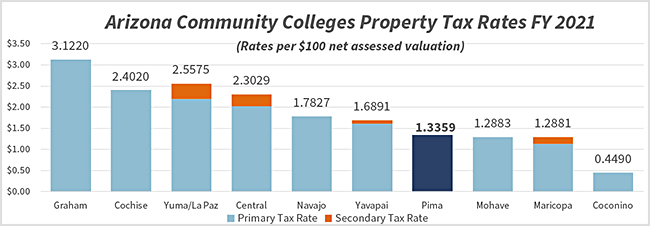
Proposition 481
Providing flexibility to enhance and expand educational opportunities
For 50 years Pima Community College has served Pima County, providing affordable, comprehensive educational opportunities to the county’s diverse communities, particularly during these uncertain economic times. Proposition (Prop.) 481 on November’s ballot would provide needed flexibility that would allow the College to continue to support students at the highest level, educate a highly skilled workforce and position the College to jumpstart the economy.
Proposition 481 would increase the base factor that is used in the annual expenditure limitation calculation, which limits how much the College can spend on operations. Prop. 481 would not increase taxes, but would increase the College’s flexibility to spend tax revenue it already collected directly on educational programs and services. This simple increase to the Base Limit would increase PCC’s available revenues...without affecting taxpayers.
Voter Information Pamphlet
For more information see the Voter Information Pamphlet.
Frequently Asked Questions
There are four primary reasons for the permanent adjustment:
- 1979/80 Methodology disadvantages PCC
Pima Community College had, by far, the lowest cost per full time student in 1979/80 and, as a result, has had a lower per student EL than the other colleges in the state ever since. Put another way, Pima’s EL is approximately 38 percent lower than the average.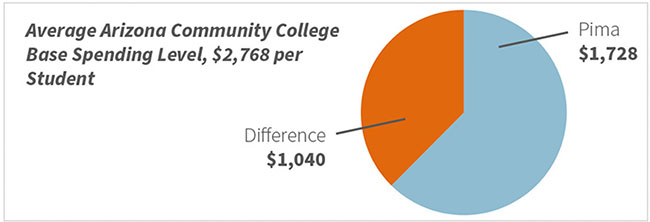
As a result, when including inflation since 1980, Pima has an EL per student that is now $3,265 lower than the average of the Arizona colleges.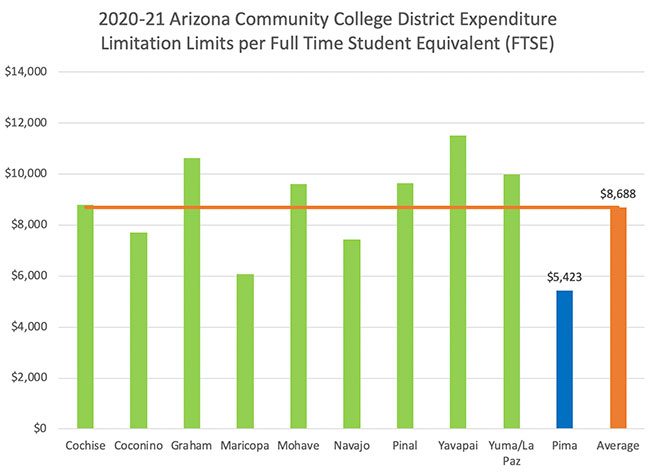
- Statutory Changes are Decreasing Community College ELs
The Arizona legislature changed how community colleges are funded, resulting in a dramatic decrease in the College’s EL. As a result, the College’s Expenditure Limit has declined from $113 million in FY2015 to $87 million in FY21 (a decrease of 23 percent).
- Costs of Education have increased faster than the EL cost of living inflator
While the Expenditure Limitation Formula has a cost of living factor to account for inflation, it is based on the gross domestic price deflator, which has not kept pace with increasing college and university costs. Higher education has experienced large cost increases related to attaining, using, and maintaining educational and business support technology, costs that were almost non-existent in 1979/80. The Higher Education Price Index, which is a measure of the changes in costs colleges and universities actually incur, has increased more than 5 times since EL started. The gross domestic price deflator, in contrast, has only gone up only about 3 times over that same period.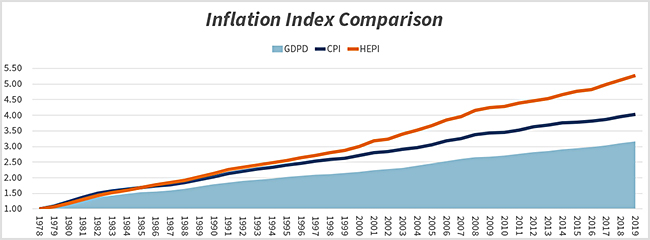
- COVID-19 Impacts
Like all businesses and individuals, the College has been hurt by the COVID-19 pandemic. Specifically, a number of non-local revenue streams, such as investment and sales tax income, have declined, which means that expenses that had been funded by other revenues now count against the Expenditure Limitation. Pima estimates that these excludable revenues may be down as much as $5 million this coming year. At the same time, the College faces large expenses related to COVID-19, such as purchasing PPE for employees and students and adding technology tools and Internet capable devices for employees and students so they can continue to work and learn effectively while remote.
If Pima had the same EL per Full Time Student Equivalent (FTSE) of the Arizona college average, it would translate into an increase to the base level of $11,484,199. This would put the College’s EL per FTSE at the average of the Arizona colleges. It would still be lower than five Arizona colleges.
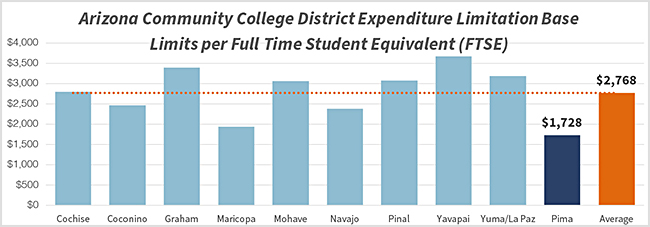
Expenditure Limitation (EL) is an Arizona law that caps the amount of tax-based revenues a local governmental entity can use for operational purposes. The annual EL amount is calculated according to a formula that uses 1979/80 spending as a base. The EL formula is:
Annual EL = FY79/80 Expenses X Enrollment Factor X Cost of Living Factor
- Enable the College to ensure that Centers of Excellence are properly equipped.
The Centers of Excellence are state-of-the-art facilities and programs that ensure Pima County employers have highly-trained and prepared employees. The Centers work in close partnership with workforce to provide students with high-wage, high-growth opportunities. - Ensure that the College provides quality student services
- COVID-19 and the rapid transition to virtual has accelerated the importance of digital literacy in the workforce. Students will be provided with mobile computing tools that will be integrated into curriculum and the classroom. One example is Nursing, which uses iPads to better explore and understand the human body through advanced video and AI technology.
- Working parents will be supported through parent cooperatives—not-for-profit preschools designed by working parents for working families—and parenting skills education.
- Avoid drastic cuts that will impact services and educational quality
- Avoid unnecessary debt to purchase equipment and fund maintenance expenses
- Avoid large tuition increases
No. Adjusting the base level would not increase taxes, but would provide the College with the flexibility to spend what it already collects more effectively in the future.
New property growth has provided a stable source of revenues for the College in recent years. We have been able to direct some of those revenues to ensure effective capital renewal throughout the District. The decline in EL going forward, however, will significantly limit the ability to use the property tax revenue for operations. So, while the College expects to have sufficient funds to provide for capital expenses (buildings), the College will face challenges being able to spend enough to support operations (expenses associated with people and programs).
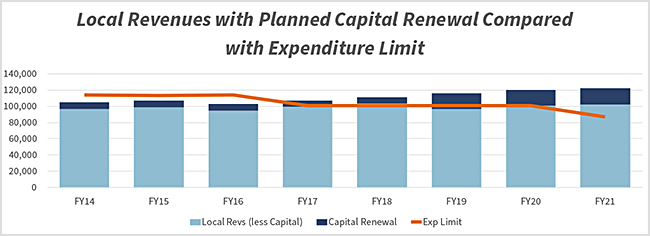
Pima Community College has the third lowest tax rate in the state and future increases are limited by statute.
In recognition of the extraordinary circumstances faced by the residents of Pima County as a result of the COVID-19 pandemic, the College decided not to raise the primary property tax rate for this upcoming tax year.
